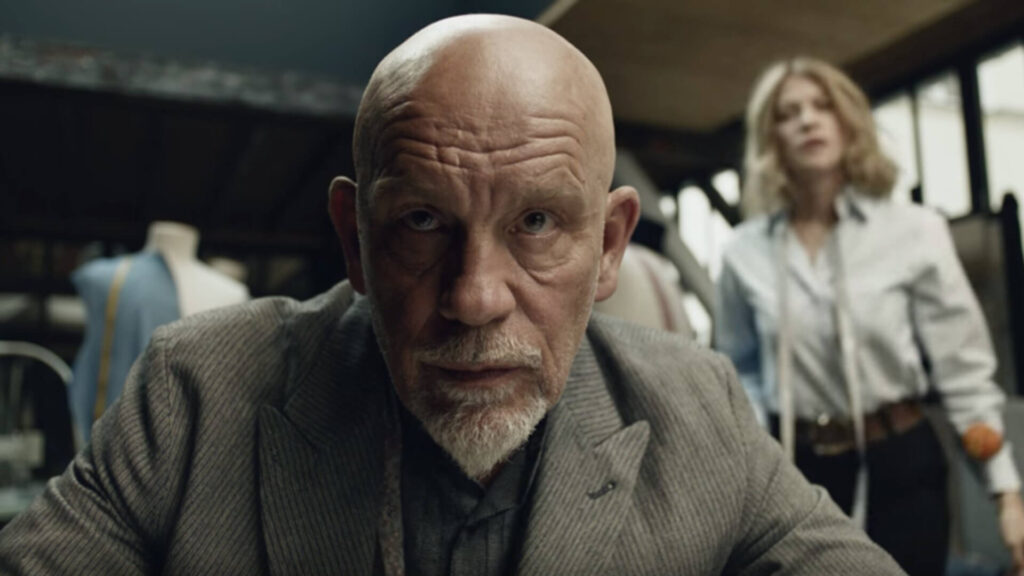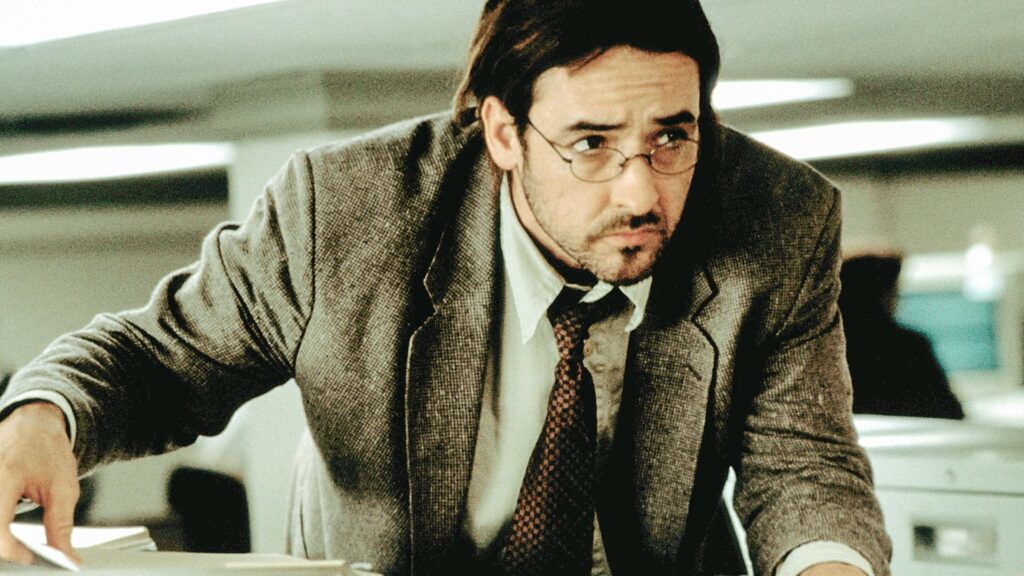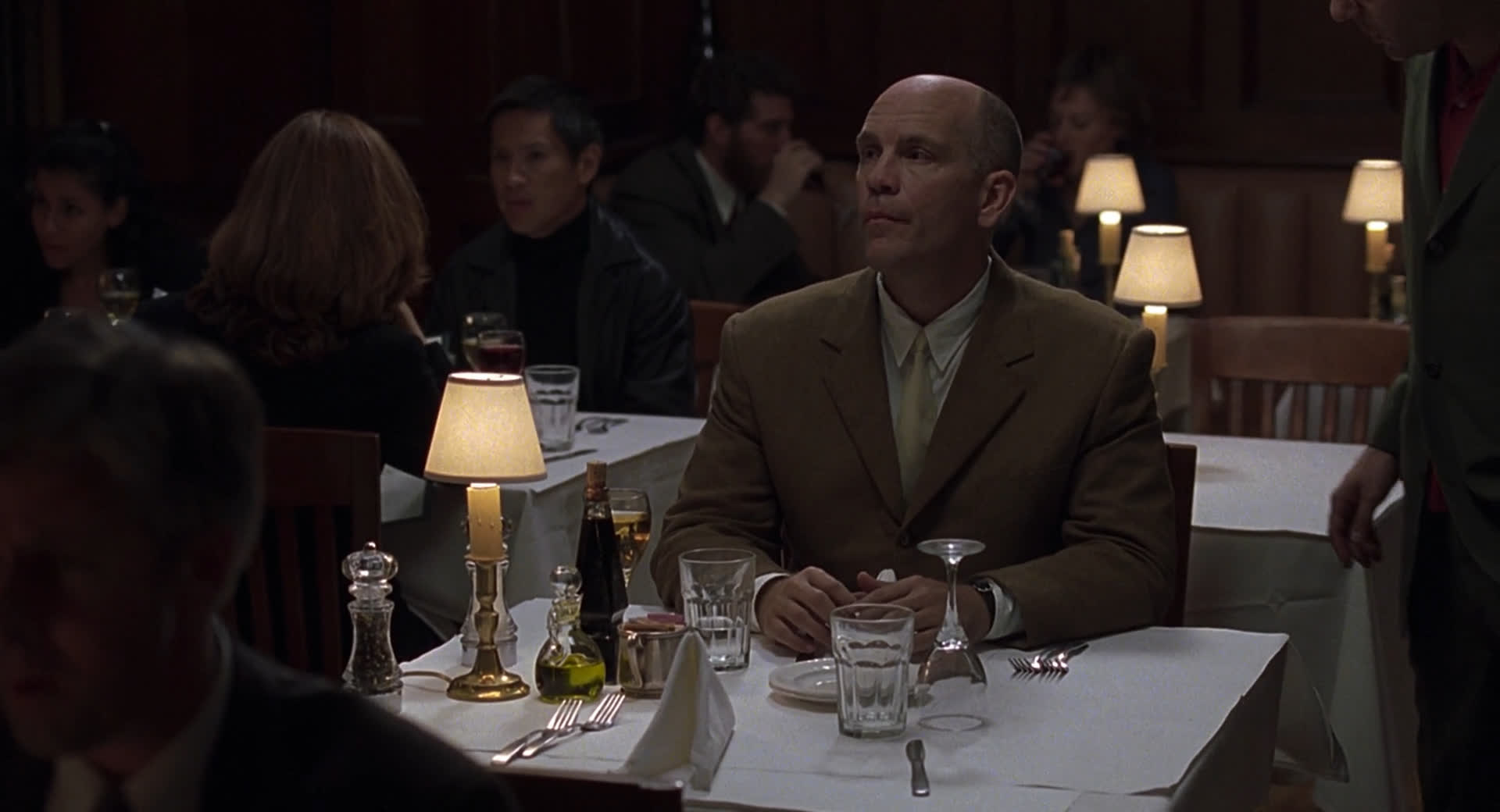Arthur Schopenhauer once said, “Talent is hitting a target nobody can hit. Genius is hitting a target nobody can see.” Being John Malkovich is the kind of genius you might see as a joke, but used to be made by Hollywood en masse. In the year the greatest movies ever were made, Being John Malkovich is one of the greatest movies ever made. It’s deep and has a lot to say, but also smart enough to be witty and absurd to keep from being boring and pedantic. Movies rarely are so tightly woven and highly potent.
Craig’s Bizarre Journey into Malkovich’s Mind

Struggling street puppeteer Craig Schwartz (John Cusack) takes a job as a filing clerk. One day he accidentally discovers a door revealed to be a portal into the mind of actor John Malkovich (played by John Malkovich) for 15 minutes. With his slinky office mate Maxine (Catherine Keener) and his chimpanzee-obsessed wife Lotte (Cameron Diaz), they hatch a plan to let others into John’s brain for a fee.
This movie came out in the same year as The Matrix, Fight Club, and Sixth Sense, and yet it’s more out-of-this-world than the entirety of 1999 (still the best year for modern cinema). They could have picked ANY actor for the titular role but they went with John Malkovich and not some conventional A-Lister like Tom Cruise? I am eternally glad that director Spike Jonze was given the reins to let loose on such a bizarre, innovative, thematically provocative project.
The Movie’s Enduring Relevance in the Age of Social Media

One reason this film remains a cult classic 25 years on is because it offered us a fantasy of people living through a rich, successful star. That was mind-blowing in a pre-social media era! Today, it’s gotten much easier to pretend to be someone you are not. We do it all the time and feel justified at times when doing so. This movie LITERALLY shows someone BEING someone they are not to gain the love of others. When you see it in this harsh and outlandish context, it’s easy to see how foolish and dehumanizing this is. I think it raises the question for the viewer: Would you rather be who you are, embrace that, and find someone who loves you for you, or, would you be someone you’re not to gain the love of someone who doesn’t truly love you?!
Post-Cinema Expression and Andy Warhol’s 15 Minutes of Fame
I see Being John Malkovich as a prototype for post-cinema expression of some kind. A prescient satire of entertainer worship in the segment where Craig abandons acting for the world of puppetry. Consider the prophecy of Andy Warhol, who predicted that in the future, everyone will be famous for 15 minutes. So, in a sense, if John Malkovich is famous, those who enter the portal become famous, for exactly fifteen minutes. When Warhol spoke, people interpreted his remarks as meaning the dilution of celebrity fame through ubiquity. They did not realize that vicarious fame could also satisfy Warhol’s prediction.
The Satirical Indictment of Art and Artists

The fact that Craig’s puppeteering only works because he takes over the flesh of a celebrity is such a hilarious indictment of “art and artists” to me. He keeps telling people that you need to reach your audiences, not lie to them under any circumstance, yet the only reason he gets popular is his Malkovich-flesh. It’s the same style of puppeteering, just a different flesh doing it. He isn’t reaching anyone and it’s all lies. Neither Craig nor the Hollywood Media who proclaim him a genius seems to notice! It really brings home how all those high-minded statements you often hear from “artists” are just a smoke-screen for a desire to be adored by the masses.
Dreams, Desires, and Lack of Scruples
Jan Svankmajer, a Czech artist who directed a stop motion version of Alice in Wonderland in the 1980s, once said that while the Disney/Tim Burton versions of Alice follow the guidelines of a fairytale, his version was more like a dream. The difference being that fairytales have a message based on moral values, while dreams are pure expressions of one’s desires and aren’t bound by scruples.
Svankmajer’s words came back to me because Being John Malkovich’s characters are driven by their desires to the point of becoming blind to almost anything else, be it the consent and well-being of others, be it their own happiness or self-preservation.
The Characters’ Flaws and Obsessions
Craig is so infatuated with Maxine that he becomes dangerous towards his own wife and in the end, decides to spend the rest of his days just watching other people live, without any of the control he once had over Malkovich. Lotte crowds their apartment with animals she rescued and tries to kill Maxine after being rejected. Maxine becomes instantly invested in the use of the portal for profit even though she barely stands Craig.
The elderly are so obsessed with living forever that they take Malkovich’s body, and the movie’s final images show their future, helpless host.
The real John Malkovich lets Maxine into his life too many times out of fascination and pays the price for it.
The Inevitable Consequences of Trying to Be Someone Else
In the end, Craig is doomed to live in a child’s mind as the child is the next “new vessel”, trapped as prisoner without any control. It’s as if the movie is saying: if you spend your life trying to be someone else, you become unhappy and lose the control you thought you had as you can’t find inner happiness and trapped watching the people close to you become distant.
John Cusack’s Sympathetic Role and Catherine Keener’s Ruthless Charm
It’s telling how sympathetic and likeable John Cusack is that I was rooting for him until halfway through the movie. Another actor would have been more immediately repugnant to a general audience. Craig is a petty and selfish little man, but I wouldn’t go as far as to call him “cruel”. He doesn’t seem to enjoy hurting his wife Lotte; his reprehensible actions against her are merely driven by desperation, as he sees no other way to fulfill his longing for Maxine.
Maxine is the cruel and manipulative femme fatale.
The enjoyment she gets from toying with people is obvious (“Oh my darling it’s so much more! It’s playing with PEOPLE!”), and as much as she is sexy, funny, and charismatic, she is a ruthless person who couldn’t care less about other people’s feelings. Catherine Keener was just becoming known while Cameron Diaz and Cusack were in such different roles than we had previously seen them in.
Cameron Diaz’s Transformation From Bombshell to Librarian

Cameron Diaz’s make-up artist Gucci Westman described styling her in the role as “a challenge, to make her look homely.” I cannot think of any other major movie since that has turned a blonde bombshell into a regular school librarian!
The Birth of the Kaufmanesque and a Last Hurrah for Artistic Freedom
This is the birth of the Kaufmanesque: original, bold, crazy, delightful, hilarious, bonkers, absurd, and transcendent. Charlie Kaufman may now be universally recognized as one of the greatest screenwriters, and maybe even the most original of them all, but to create that content it seems he has to tap deep down into his own personal insecurities and use that as the central pillar around which everything ends up revolving.
This offbeat film opening in over 640 theatres in 1999 was proof that people were demanding something challenging and reflective of their daily reality, rather than tired escapist claptrap. This was probably the last time that major movie execs were gutsy enough to let untested weirdos like Jonze and Kaufman show their wares, without guarantee of breaking even at the box office.

Chaitanya Tuteja is someone who enjoys sharing his thoughts on books, movies, and shows. Based in India, he appreciates exploring different stories and offering honest reflections. When not reflecting on his favorite media, Chaitanya enjoys discovering new ideas and embracing life’s simple moments.

